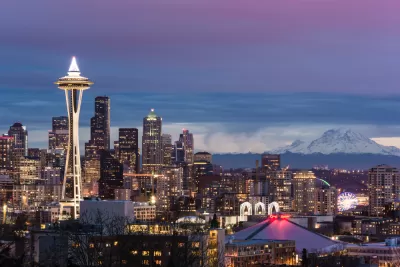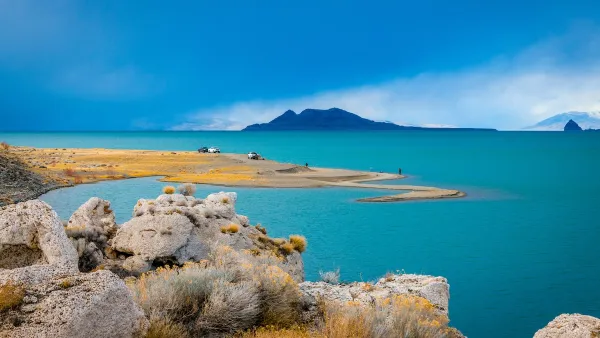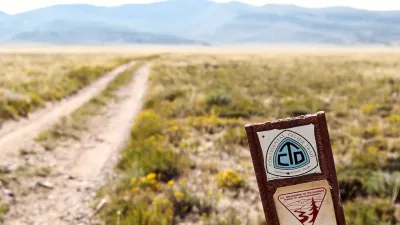The New York Times Opinion Pages present a new narrative for the American West: "A wounded piece of land can be made whole, if managed for the future by people whose capacity for wonder is limitless."

"The big story of the West today is how the urban and the wild have produced a unique lifestyle — a new-century ecosystem. Each depends on the other. And the lands, though badly scarred during the last century, are being restored, showing the power of people to mend places they love," writes Timothy Egan.
"This is not to say there aren’t endangered plants and animals, drought-shriveled grasslands, oil-plundered prairies or entire forests killed by a surfeit of beetles in a climate-changed West. But another narrative is more compelling."
Egan cites the example of Seattle, with a metro area of 3.7 million people, access to three national parks, and, recently, the largest dam-removal project ever. Also cited is the example of Tucson, with access to Saguaro National Park, and Las Vegas, with the Red Rock Canyon National Conservation Area.
Then there is this gem of a passage, among many more: "The modern West is the most urbanized part of the United States. About 90 percent of Westerners live in areas defined by the census as urban. Utah, where most people live along the Wasatch Mountain Front, is slightly more urban than New York State, with its empty reaches in the north. Ronald Reagan was probably the last of the costume cowboys to fool Easterners into thinking that everyone who lives here is saddle sore. Sure, Cliven Bundy, the deadbeat rancher with the 19th-century racial views, was a hero to the clueless indoorsmen of Fox News. Everyone else was appalled."
FULL STORY: New West Renaissance

Planetizen Federal Action Tracker
A weekly monitor of how Trump’s orders and actions are impacting planners and planning in America.

Chicago’s Ghost Rails
Just beneath the surface of the modern city lie the remnants of its expansive early 20th-century streetcar system.

San Antonio and Austin are Fusing Into one Massive Megaregion
The region spanning the two central Texas cities is growing fast, posing challenges for local infrastructure and water supplies.

Since Zion's Shuttles Went Electric “The Smog is Gone”
Visitors to Zion National Park can enjoy the canyon via the nation’s first fully electric park shuttle system.

Trump Distributing DOT Safety Funds at 1/10 Rate of Biden
Funds for Safe Streets and other transportation safety and equity programs are being held up by administrative reviews and conflicts with the Trump administration’s priorities.

German Cities Subsidize Taxis for Women Amid Wave of Violence
Free or low-cost taxi rides can help women navigate cities more safely, but critics say the programs don't address the root causes of violence against women.
Urban Design for Planners 1: Software Tools
This six-course series explores essential urban design concepts using open source software and equips planners with the tools they need to participate fully in the urban design process.
Planning for Universal Design
Learn the tools for implementing Universal Design in planning regulations.
planning NEXT
Appalachian Highlands Housing Partners
Mpact (founded as Rail~Volution)
City of Camden Redevelopment Agency
City of Astoria
City of Portland
City of Laramie




























